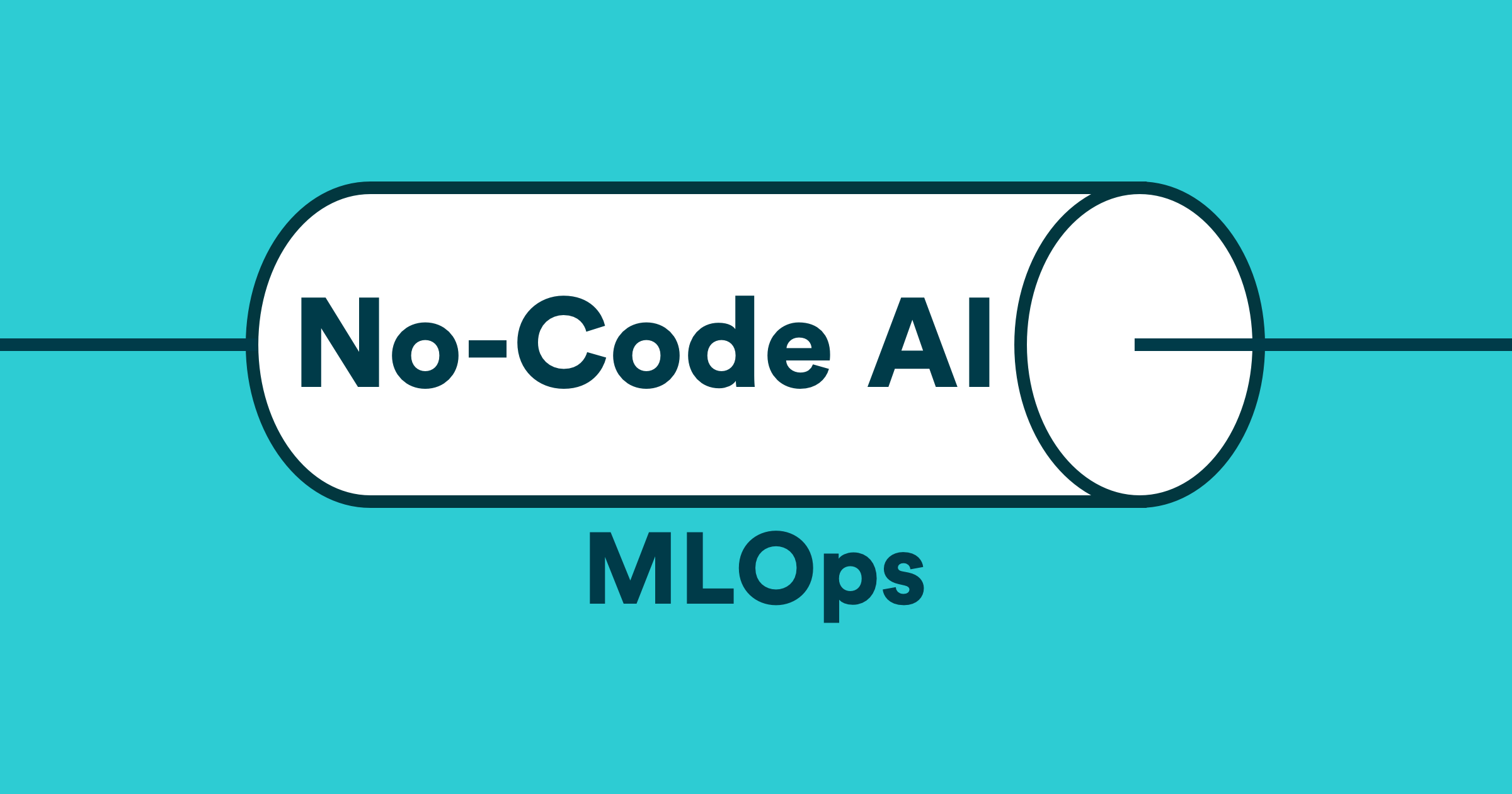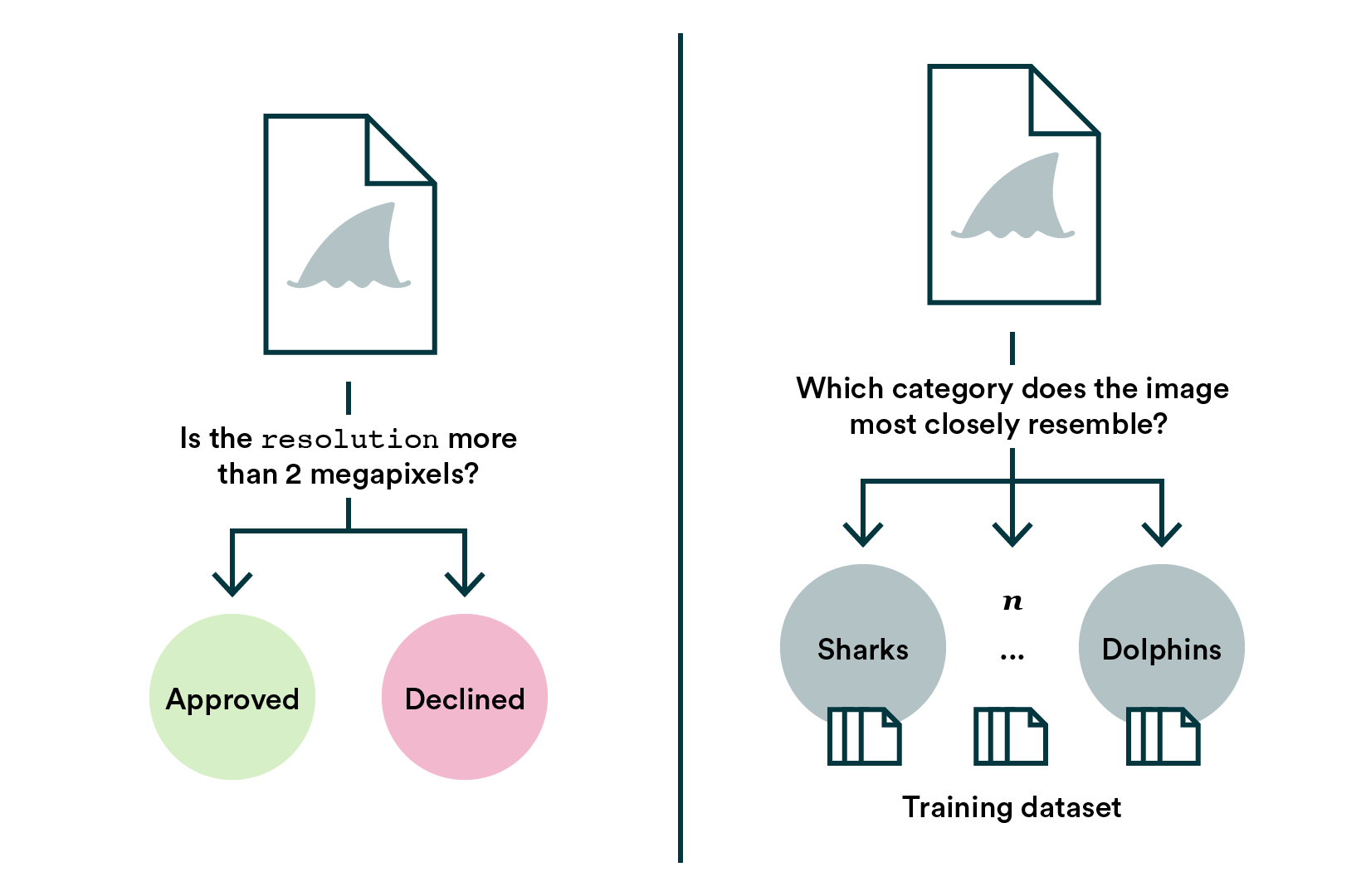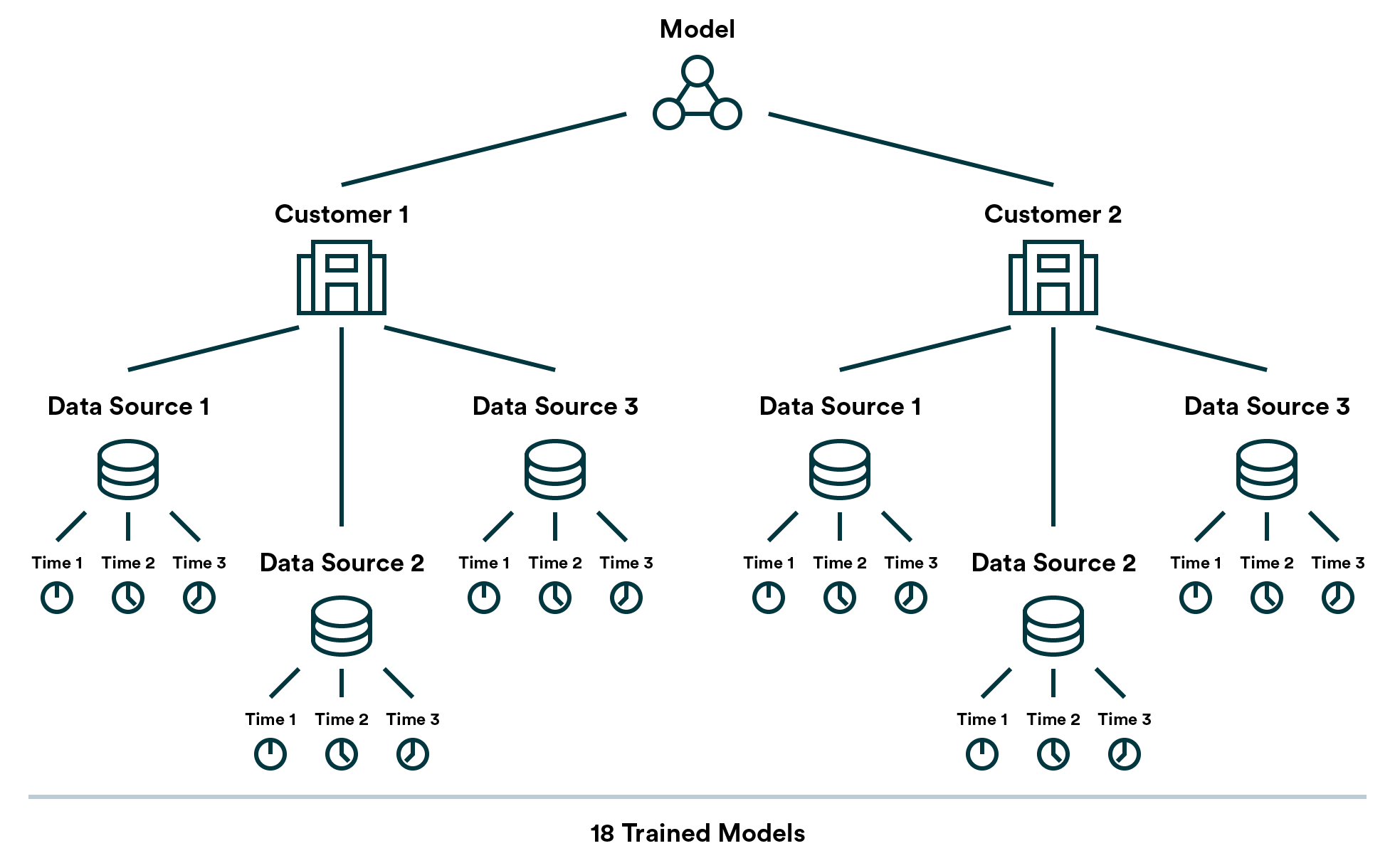
No-code AI and MLOps: No-code AI is only no-code for the end user
Otso RasimusNo-code and no-code AI in 30 seconds
No-code AI is making its way to the mainstream. Both startups and established companies are looking at either complementing their existing products or building new products that offer their customers the ability to empower themselves with AI – without requiring the end-user to have a Ph.D.
First, briefly about no-code; The no-code movement has been gaining traction at an increasing pace with champions such as Bubble and Webflow, who've both raised funding rounds north of $100M in the past 12 months.
The definition of no-code is a little fuzzy (or at least it feels so to me) as we've had different visual development tools before. But where I think no-code has taken leaps is with what's possible. It's no longer just customizing a template but instead building ultimately custom applications without writing a line of code. Of course, as with any abstraction, there are still limitations. Compare however, for example, Webflow with website builders like Squarespace, and you'll see a vastly different approach.
So what's no-code AI unique value proposition in all of this? Code or no-code, AI (or machine learning to be more specific) makes fuzzier problems solvable than predefined logic does.

For example, previous no-code tools might have made it easy to build logic to classify images based on name or metadata. No-code AI tools will instead make it possible to classify based on the image itself. Now, this is just one example, but you can imagine countless problems that are just a bit too hard to define rules for.
For this article, let's define a no-code AI platform as a platform allowing the user to train a model with their data. For a more thorough look at the no-code AI ecosystem, check out Levity's excellent article on no-code AI.
No-code AI and MLOps
No-code is only no-code for the end user, and that is also true for no-code AI. These platforms rely on the ingenuity of developers to abstract away the technical parts.
One way of looking at these applications is by dividing them into the following functional layers:

The application layer contains all your end-user interactions.
The data science layer has your models.
Finally, connecting these two layers is the MLOps layer facilitating how you train and serve your model to the end user.
Most no-code AI platforms differentiate with a stellar UX (application layer), purpose-built models (data science layer), or a combination of these.
The MLOps layer is more an enabling part of the platform rather than a unique differentiator. The best-case scenario is when the end user isn't even aware of how the service delivers custom AI.
However, the MLOps layer is vital for the product team to deliver the product reliably and without risk.
Developing a backend for machine learning that can scale with product adoption is often a huge challenge. Each user and dataset will increase the number of models deployed, and more users mean more models that are being trained concurrently. In addition, every end-user interaction should be handled automatically, which means the ML infrastructure needs to be tightly integrated with the application layer.

How the complexity increases with custom trained models (Practical MLOps eBook)
No-code AI and Valohai
The bottom line is that the ML infrastructure for companies building no-code AI tools is a massive technical challenge with limited upside potential. I might be biased, but the answer is relatively simple. Build the things that need to be unique; buy the things that don't.
We've built Valohai for use cases where scalability and integration are critical. Every functionality of Valohai can be used with the API, and the Valohai MLOps platform can handle everything from orchestrating machines for training to deploying to Kubernetes.
Here are a few examples of companies building their unique no-code AI capabilities on top of Valohai:
Levity
Levity enables companies to automate workflows specific to their business, from recognizing objects in microscopic images to automatically categorizing incoming documents for different internal workflows.
For a startup like building and maintaining their own custom MLOps solutions would have been a massive overhead. Their team started by looking into the available open-source solutions, such as Kubeflow, but decided against that approach.
"Even with all the ready-made pieces we could use to build our solution, it just becomes an unreasonable budget and resourcing request to build and maintain our own custom MLOps solution."
Thilo Huellmann – CTO & Co-Founder at Levity
Read more about Levity and Valohai
Neurolabs
Neurolabs enables companies to skip the data collection and train models for computer vision without any labeled images. Their platform can generate synthetic data quickly with a few selections and produce a production-ready model trained with the generated data. Example use cases include scanning store shelves and assuring manufacturing quality.
Valohai was uniquely suited for the use case because the platform allows teams to build pipelines with almost anything inside. For example, Neurolabs uses Blender inside their Valohai pipelines to generate synthetic images based on user inputs.
Read more about Neurolabs and Valohai (MLOps in the Wild eBook)
